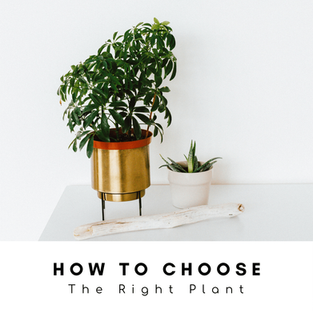Protecting Your Plants from A/C
- Aerify.com

- Jun 20, 2021
- 4 min read
Air vents are the “unnatural” enemy of your houseplants because they are not found in nature. While we are hard-pressed to survive without Air Conditioning (A/C) even for a day, our plants are forced to live with it for an entire season. How can you master the balance so that your plants come out of their growing season bigger, fuller, and better?
As an Amazon Associate, we get commissions for purchases made through links in this post.
Plants and Air Conditioning (A/C): What’s the Problem?
Many houseplants are from humid, tropical regions and thrive in 65-75 degree temperatures. The challenge? Air Conditioning (A/C) lowers a room’s temperature and humidity, making your home environment the complete opposite of your plant’s needs.
Slowed Down Cells
Cool temperatures can slow down or even freeze the cells in your plant. Why are they important? Your plant uses these cells to transport nutrients, providing it with energy. Put simply: Air Conditioning could starve your plant.
“Breathing” Issues
As noted, A/C lowers your home’s humidity. What does your houseplant think of this? Low humidity equals high transpiration. What does that mean?
Plants naturally evaporate water (transpiration), absorb carbon dioxide, and release oxygen through their leaves’ pores (stomata). Since it is easier for moisture to evaporate in dry air (i.e. when the A/C is on), transpiration occurs at an increased rate. The result? Your plant gets out of breath. Why? It’s releasing all of its humidity into the air, without anything to replace it with.
Visible Signs of Chilly Plants
Several symptoms may indicate that your plant is suffering from exposure to Air Conditioning (A/C):
Temperatures
If temperatures are too chilly, your houseplant will begin to wilt or bend, which may be coupled with fading of its natural color or yellowing.
Continued exposure to the cold will make stems mushy, and they will have a foul odor. In these extreme cases, it is impossible to reverse these symptoms. Move your plant to a warmer location and remove the rotted stems.
Low Humidity
Brown edges, color fading, leaf drop, and slow growth show that your plant is not receiving proper moisture from the air or its soil.
How to Protect Your Plants from the Air Conditioning (A/C)
The fact of the matter is: You are not getting rid of our houseplants or your Air Conditioning. But, there are a few things you can do to minimize the impact of this notorious foe.
Change Locations
The closer your plant is to the Air Conditioning (A/C vent), the colder it is going to be. Avoid placing your houseplant close to or in the direct path of Air Conditioning vents.
That being said, you must change your care routine to suit your plant in its new location. Here are a few reminders:
Select a location that is appropriate for your plant’s lighting needs.
Since your plant is receiving less air circulation, remember to water and mist less frequently. Water that sits on the surface of leaves can cause brown water spots. If your soil is kept too moist, it will also increase your population of fungus gnats!
Purchase an A/C Deflector
What if your Air Conditioning (A/C) vents are located in your prime plant location? Purchasing a Vent Deflector is a simple solution. They are easy to install and come in various models for floor, sidewall, and ceiling vents. The purpose? Vent Deflectors protect your plants by redirecting the air while still cooling your home.
Increase Humidity
If your plant suffers from a lack of humidity, give it a boost by misting its leaves every 1 to 2 days. Use a fine-mist spray bottle in the morning to ensure the water droplets have enough time to evaporate. You could also purchase a humidifier. They are the most consistent, low-maintenance way to increase the humidity in your home environment.
A Summer Vacation
If you have warmth-loving, humidity-craving plants, they may experience their best growing season outdoors. Ensure you place them in a suitable location, as most houseplants cannot endure the direct outdoor sun.
Make a Temporary Terrarium
If you have a few precious, small plants, a Terrarium is a great way to maintain humidity and a warm environment. You can purchase a large glass flour jar or a glass dome display cloche and place your plant inside (pot and all). This is an easy, effective way to create a mini-ecosystem. Remember to water less frequently because your plant is not receiving ventilation.
Commit to Regular Moisture Checks
During the summer months, most houseplants are in their growing season and are thirstier than they were in the winter months. Check your plant’s soil moisture levels regularly.
Waiting until you see visible signs that your plant is dehydrated (such as drooping leaves) will contribute to inconsistent watering or under-watering in most plants. Your plant’s symptoms of improper watering habits will be escalated by the chillier, dry climate your Air Conditioning (A/C) provides.
In short: If your plant experiences issues during the summer months, do not be quick to blame Air Conditioning (A/C) as the only factor. Ensure that you are also caring for your plant’s other needs properly.
Choose Hardier Plants
If you are determined to have a plant nearby an uncovered A/C vent, select a plant species that can take the cooler temperatures. While there are not many cold-weather-loving houseplants, there are a few that are less fussy when it comes to their daily environment.
Air Conditioning (A/C) tolerant plants usually have larger, thicker leaves and include varieties such as the Snake Plant, Rubber Tree, and ZZ Plant. The Spider Plant, Pothos, and Parlor Palm are also known for their hardy, adaptable character and maybe a good fit.
Whichever method you choose to protect your houseplants from Air Conditioning, we wish you a happy summer full of luscious growth.
Read More
.png)
.png)














Comments